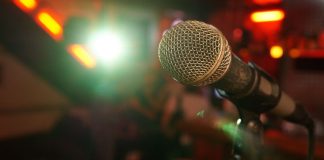For decades now, the internet has fooled people into believing all kinds of things with photoshopped and fake images. The manipulated pictures are even responsible for pulling wool into people’s eyes before we have social media to spread it.
We all fall there at many times time and when the tools to make editable images have become more accessible and easier to use. It speeds up fake photo cycles and wrong information. We can use image search tools to make our search easy.
Check the picture carefully
The process can be time-consuming, and that means there is plenty of space for mistakes. Therefore, having a sharp eye for the most likely error might allow you to catch false instead of falling for it. You only need to know what to look for.
An image search for photoshopped pictures can be difficult, but the understanding of the fakeness makes it more difficult. Mastering the art of photo manipulation requires someone to fully understand the shadows, reflections, perspectives. Moreover, one must know how to use the right image finder to cover their tracks.
Try inverted photo search
If any picture is fake, it often uses the original one as a source. That means you will find the original and determine if something added. A quick and easy way to find a photo is by doing a reverse image search, which can produce the same photo results, including a version that has not been manipulated.
Apply a general understanding
Understanding is what we can do to analyze and assess the photo at first with our naked eyes. We often get an intuition that it can’t be unique as it looks. If you observe unrealistic or unreliable elements in any picture, you have to dig down to find out more about it. Remember that if it’s too unique, there are more opportunities to be manipulated.
Check perspectives and proportions
Is the picture perspective real? Or it looks like something unusual. Then go for image-search whether there is a shift in the picture’s perspective. If you get the answer, it is affirmative; the picture may be made by combining two different photos.
Light effect
Shadows and reflections formed in photos must coordinate with light sources. For example, if light to the object in the picture falls from the left side, the object’s shadow must fall on the right side. If you observe the image search effect of wavy light in the photo, it may be manipulated.
Some things look too good to come true or just suitable for narration that people might be willing to forget what is realistic to believe is sometimes for the eyes to deceive them.
Body shape
Retouching and editing forms are prevalent today in the media industry, fashion, and photography that we found by image search unusual even though we felt it. Where more or less part of their profession, it is possible to mark the difference between the original and manipulated scene.
Blurry spots
This is quite clear and easily identified when one picture is copied to another, and both do not complete each other. A few sharps and extraordinary photo editors can only match two pictures with complete perfection. If blur, we can easily see sports when you enlarge the image.
Irregular patterns and textures
To assess the image, if it’s fake or real, it’s good to study the image’s pattern and texture. If one or more objects appear out of the way, it means that the picture is not original and has been modified. Edges, broken lines, and a little irregular pattern all point towards manipulation when identified via image search.
Skin color
Well, we all do this before uploading our photos on social media posts. If you don’t do that, you might be an exception. To edit pictures, change the skin tone is common today. Sometimes it’s hard to identify different tones.
But automated tools can easily detect some circular spots on the face. For this, you can saturate complete photos, and it will highlight uneven tones in the picture.
Check Exif and other metadata
You may or may not know this, but every digital photo has its fingerprint. The pictures found through image search contain it in EXIF data, a collection of information that tells you about everything you need to know about pictures.
When it was taken the camera was used to pick it up – they stored everything in the EXIF metadata. The original photo will usually contain this information; it won’t be fake.
In the End
People around you can justify photo manipulation to make it a perfect picture. It lies and is easy to edit and change the photo correctly. It is challenging to find manipulated pictures over the World Wide Web. Image search through different tools is the best choice in this regard.







